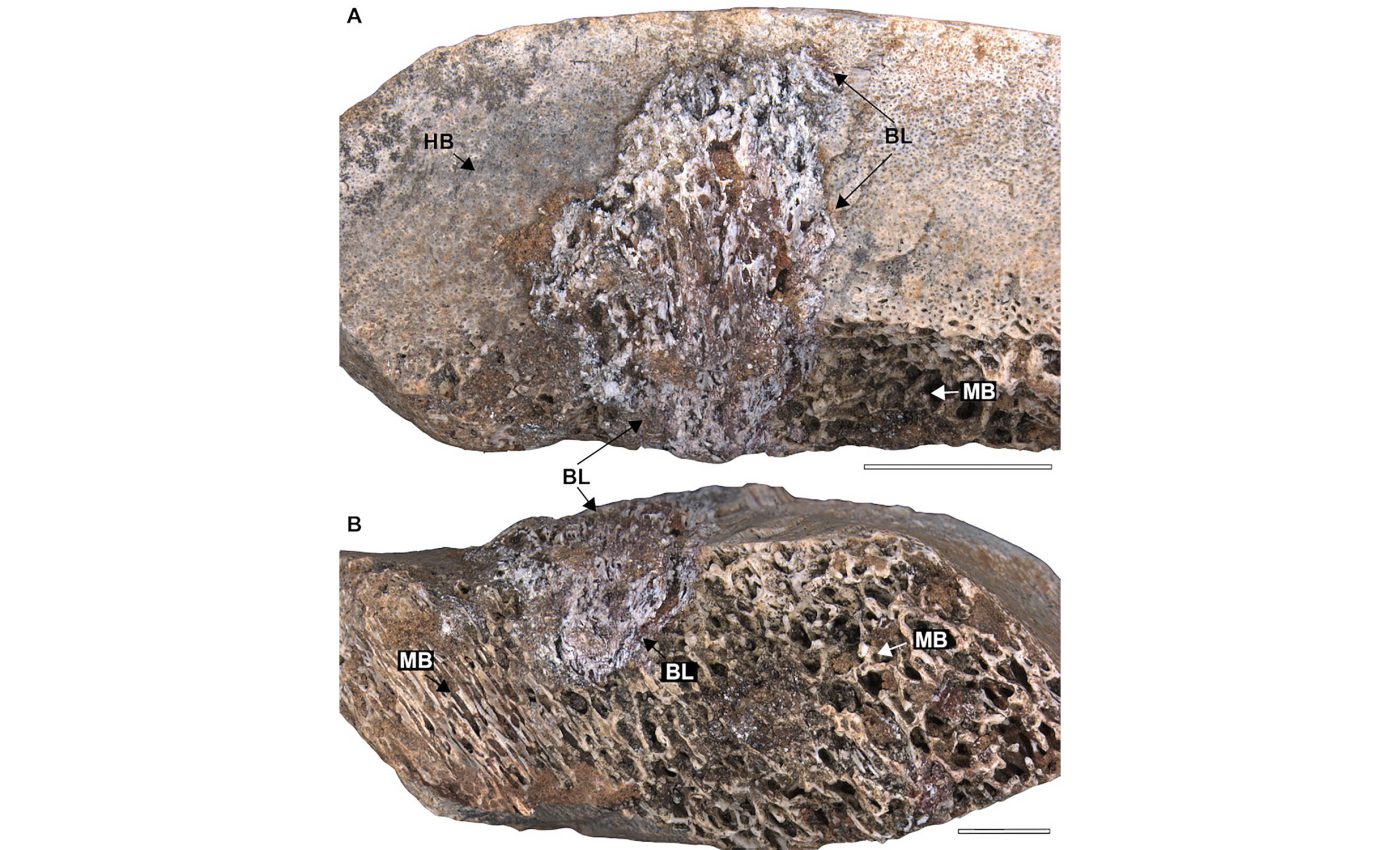
Giant, long-necked dinosaurs struggled with fatal bone disease
Dinosaurs have long fascinated us for their size, diversity, and survival stories. Yet, their bones still reveal mysteries about their struggles. Recently, fossils discovered in Brazil added a surprising chapter.
A set of sauropod remains from the Cretaceous period showed evidence of a fatal disease. These findings suggest that even giants of the past were not safe from infection.
Discovery in Brazil
The bones were found in Ibirá, São Paulo. Researchers supported by FAPESP identified signs of osteomyelitis, an inflammatory bone disease caused by pathogens such as bacteria, viruses, fungi, or protozoa.
Six individuals dating back about 80 million years displayed clear evidence of the illness. None of the bones showed healing, meaning the animals likely died while still infected. The findings appear in The Anatomical Record.
Many dinosaurs carried disease
“There have been few findings of infectious diseases in sauropods, the first having been published recently,” said Tito Aureliano, first author of the study and a researcher at the Regional University of Cariri (URCA).
“The bones we analyzed are very close to each other in time and from the same paleontological site, which suggests that the region provided conditions for pathogens to infect many individuals during that period.”
One fossil had infection limited to the marrow, while others showed damage spreading outward. These lesions had a porous, spongy texture, marking them distinct from cancers such as osteosarcoma.
The pattern suggested vascularization, meaning blood vessels fed the infected regions. Unlike bite marks from predators, which sometimes show signs of bone regeneration, these did not heal.
Bone remodeling patterns
The study emphasized how osteomyelitis can alter bone tissue through reactive bone growth. This process, called periosteal reaction, occurs when inflammation stimulates new bone to form on the outer surface.
In the Ibirá fossils, three different patterns appeared: small circular protrusions, fingerprint-like ellipsoid marks, and enlarged protrusions with greater height and area. These variations revealed a mosaic of infection-driven remodeling, showing how the disease progressed differently within each individual.
Dinosaurs died with active disease
Despite varied manifestations, none of the fossils displayed healing tissues. The absence of repair, combined with a lack of structures usually seen in chronic cases such as sequestra or cloacae, suggests that the disease advanced quickly.
Infections were still active when the animals died, hinting that their health had been severely compromised.

Microscopes confirm patterns
Researchers at the Federal University of São Carlos (UFSCar) examined the fossils with electron and stereomicroscopes, uncovering three unique patterns of osteomyelitis.
Some bones carried small circular bumps, others bore fingerprint-like protrusions, while a third type displayed wide circular marks.
“These lesions could connect with muscles and skin and become exposed, oozing blood or pus,” explained Aureliano.
Cause of illness unknown
The exact bones studied were hard to identify, though at least one rib and several limb bones were recognized. Both large and small sauropods were affected.
The cause of the infections remains unknown. A 2021 study at the same site documented another case of osteomyelitis, linked to blood parasites in Ibirania parva.
Environment spread disease in dinosaurs
The site, called the São José do Rio Preto Formation, had an arid climate with shallow rivers and stagnant pools. Dinosaurs and other animals often became trapped and perished, leaving fossils behind.
“This environment probably favored pathogens, which may have been transmitted by mosquitoes or by the water itself that was ingested by the fauna, which included dinosaurs, turtles, and animals similar to today’s crocodiles,” said Aureliano.
These results expand our view of prehistoric disease. They also show how infection interacted with bone remodeling, helping paleontologists distinguish osteomyelitis from other conditions.
Studying such ancient illnesses offers a window into dinosaur biology and survival. It highlights that even dominant creatures of their time lived under the constant threat of diseases that left their mark in bone, shaping their history and ultimate fate forever.
The research was supported by the National Institute of Science and Technology of Parasitic Hymenoptera (INCT Hympar) in the Brazilian Southeast Region.
The study is published in the journal The Anatomical Record.
—–
Like what you read? Subscribe to our newsletter for engaging articles, exclusive content, and the latest updates.
Check us out on EarthSnap, a free app brought to you by Eric Ralls and Earth.com.
—–













